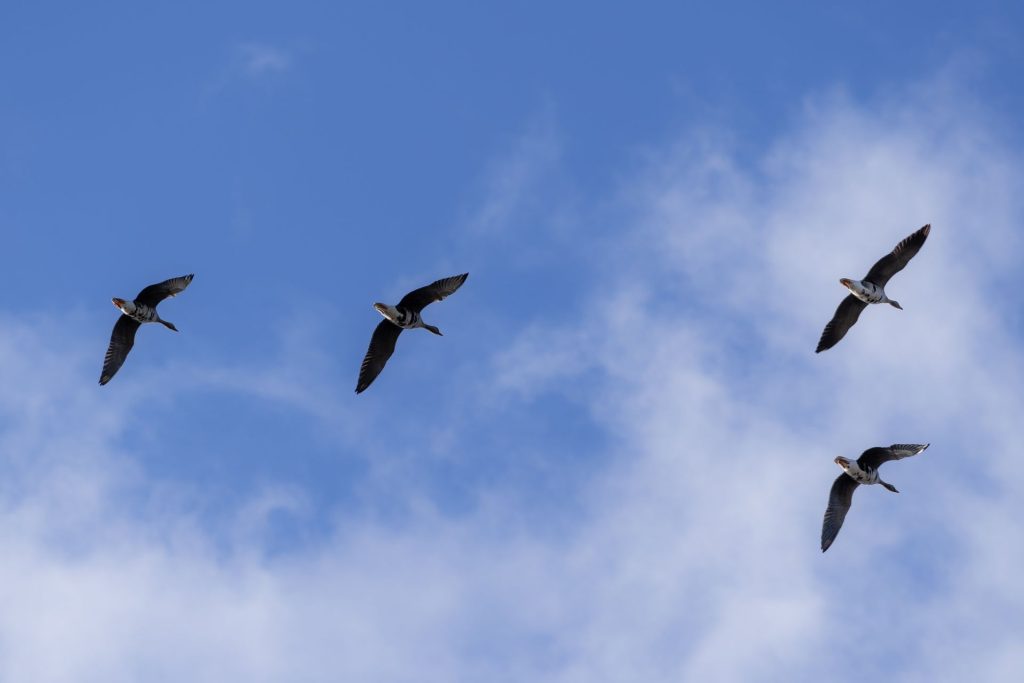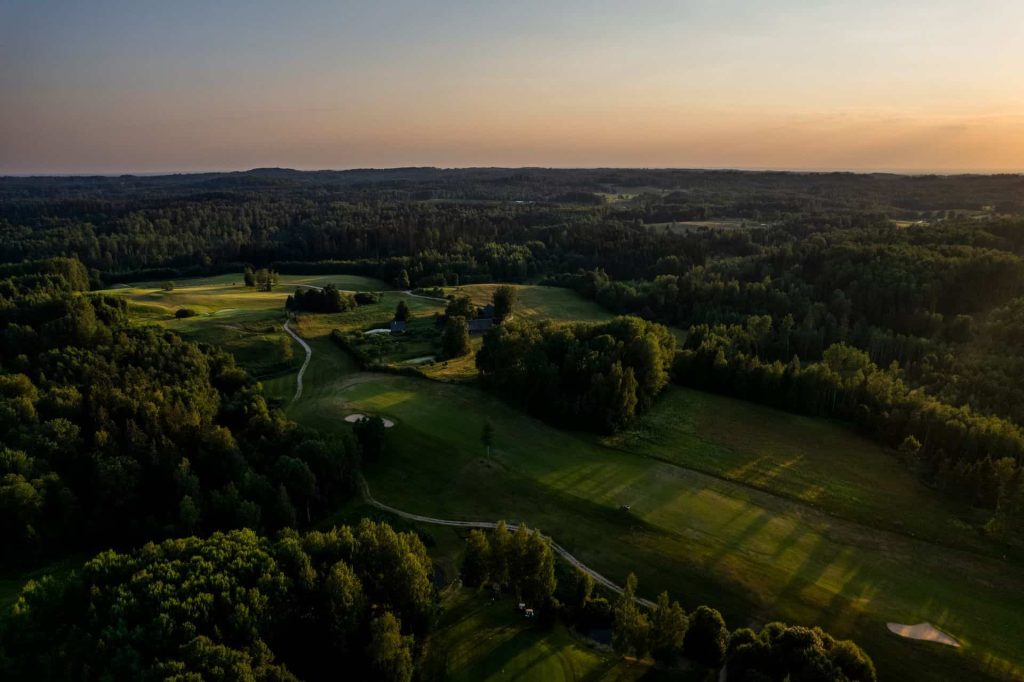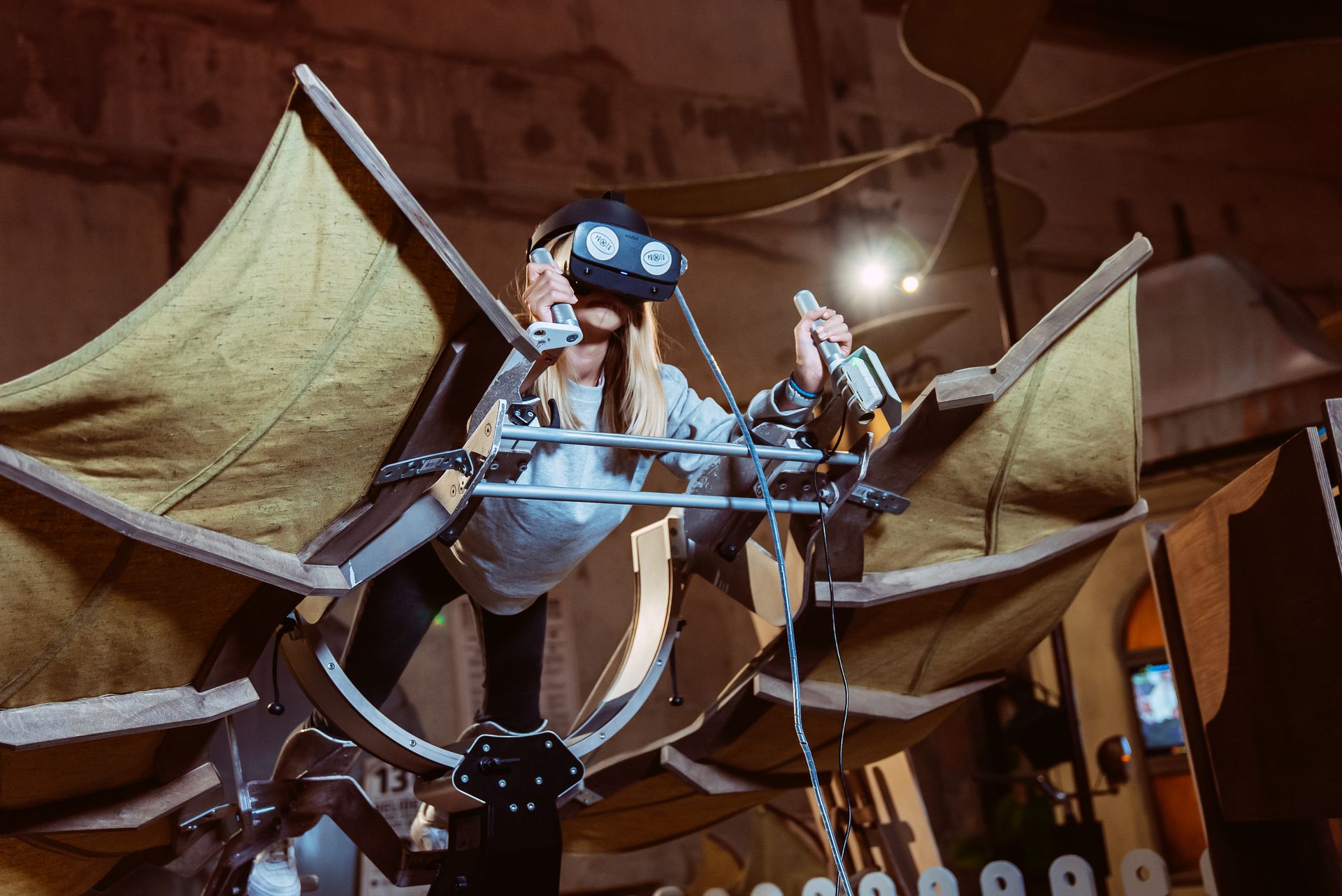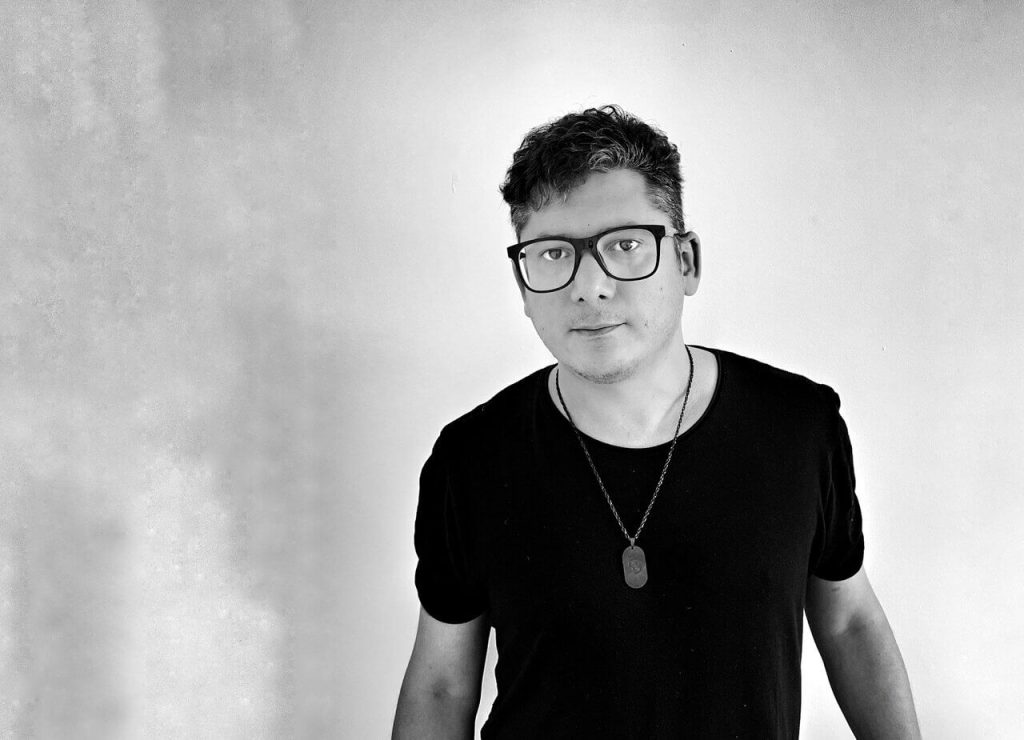artist duo alternative systems finds creative freedom with e-Residency
International artists harness e-Residency to run their global AI-driven art projects and explore creative freedom without borders

The clouds in Estonia are different. They hang low in the sky, vast, billowing and cotton-like. It's one of the first things creative technologists and e-residents Tong Wu and Yuguang Zhang noticed when they landed in this part of the world.
"The volume of the clouds here is different, the distance is different," remarks Tong. "It feels like a huge mountain is coming towards you."
Tong and Yuguang are members of a New York-based technology and multimedia art duo called Alternative Systems. Both originally from China, they met at New York University's Tisch School of the Arts in its interactive telecommunications program.
Yuguang has since become an adjunct professor of generative media and digital arts there, while Tong now works as an independent artist and as a part of Alternative Systems. They both seek to use AI in their art.
They are also Estonian e-residents, opting to join the program to take advantage of the opportunities that it offers international artists such as themselves. "You can access and process it wherever you happen to be," says Tong of the program. "That's the most impressive thing."

Up in the clouds
Tong and Yuguang are enamored with clouds. Since 2021, they have led a collaborative art project called the "Bureau of Cloud Management," which they describe as an alternate reality government agency that oversees the formation of clouds within a controlled monitoring area.
The project has different arms, including immersive installations and a web portal. There are different ideas underlying it. Though clouds are considered to be the core of global-scaled networks of computing systems, Tong and Yuguang want to encourage people to be more present in their physical realities. One way to accomplish this is through cloud observations.
"Clouds are like love," says Tong. "Everyone has a sense of it, but you don't know to what degree you understand it. I can see it one way and you can see it another way," she says.
Alternative Systems’ global art project lands in Estonia
Alternative Systems have showcased the BCM in New York, California, and Portugal over the past few years. In these exhibitions, they have used AI to create visuals of clouds and cloud-related memories as described by participants at events.
In California, for instance, which has a hot, dry environment, there are fewer clouds during the day. This made the response of participants different from those in New York, where one might see a cloud between a set of tall Manhattan skyscrapers. Estonia, as noted, has offered them yet another rich cloud experience.
They have also developed the project further, invited this summer to take part in an outdoor technological art exhibition called Wild Bits at Maajaam, a farm and project space for art and technology located in Otepää Nature Park.
Maajaam was founded by Estonian artists Timo Toots and Mari-Liis Rebane, who have been developing the site as an artists' hub since 2013.

At Maajaam, Yuguang and Tong worked to install three outdoor cloud observation booths from the Bureau of Cloud Management. One walks to the booth, picks up its red phone, and receives a message from the bureau.
Cameras are mounted on the opposite side of the booth which monitor nearby cloud formations. Alternative Systems has used generative AI to work with the descriptions that are read to the listener by a synthesized female voice in Estonian and English.
"What catches my attention first is how some of these cloud formations appear enormous and distant while others seem close enough to touch," the listener will hear. "The lone fragment floating in the upper blue expanse looks like it could be miles away, yet has the same visual weight as the dense clusters near the forest," the voice reads.
"I wonder if clouds exist in multiple dimensional layers simultaneously, with some parts operating in close-up intimate space while others function in vast, distant territories." Each cloud observation is different.
Using AI as a tool
According to Yuguang, the AI component of the exhibition at Maajaam has required lots of work. While the popular idea of using generative AI is dictating an idea to ChatGPT, the AI in this case needed plenty of tweaking to produce the desired response.
"Most people use AI for live transcription or to take notes and produce automatic meeting summaries," Yuguang says. "For creative projects, most of the work still needs to be done by the person," he adds. "For the art to be good, you have to work hard."
In addition to working with the AI for the new exhibition, Yuguang and Tong have had their own run-ins with Estonian nature during their residency.
Tong suffered from some to-be-expected mosquito bites, and Yuguang had an incident with a horse who thought that the red receiver in his hand was a carrot. "The horse thought it looked delicious and it came after me," he says.
According to Tong, one reason for applying for the residency at Maajaam was to visit Estonia after she and Yuguang recently became e-residents. "We wanted to get a feeling for the country," she says. "We just thought it would be a good idea to have an actual visit here."
Newly minted e-residents
According to Yuguang, he first heard of the e-Residency program from an entrepreneurial friend in New York who was involved in startups and knew which countries offered the most business-friendly environments.
While Alternative Systems is US-based, using a US entity to invoice European or Asian clients, or to apply for and receive grants and awards, can be complex. After studying the program some more, both Tong and Yuguang decided to join it.
"This makes it easier for us to sign contracts and make agreements," Yuguang says of the program. "That is the most attractive part for us."
Other artists have been drawn to the program for similar reasons, with hundreds of companies registered by e-residents involved in the arts, entertainment and creative sectors.
As noted, the program offers traveling creatives and international freelancers like Tong and Yuguang the opportunity to manage their affairs online and with low overhead costs. And for artists like Alternative Systems who are doing a residency in Estonia, it is particularly helpful, as it allows them to more easily collaborate with local partners and explore longer-term ties to the country.
Tong says she is still impressed that every part of the process, save picking up the card, could be done online. "With visas, you have to print things out, visit an embassy," she says. "This is a huge difference in that you can verify your identity easily using equipment while you travel."
As e-residents, Alternative Systems have set up an entity in Estonia called Elsewheres that they will use to manage their financial affairs. And while their time at Maajaam has ended, their cloud observation booths will be included in the exhibition in coming years, and they plan to return.
"I feel like this is essentially another kind of canvas for us," says Yuguang of the Estonian landscape. "I hope that visitors will look at these clouds. These clouds have so many patterns."
Apply for e-Residency
More from e-Residency
- Sign up for our newsletter
- Watch fresh video content - subscribe to our Youtube channel
- Meet our team and e-residents - register for our next Live Q&A

